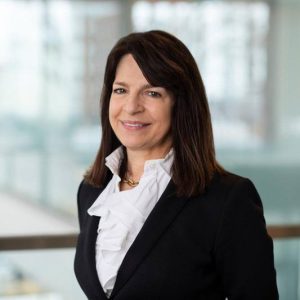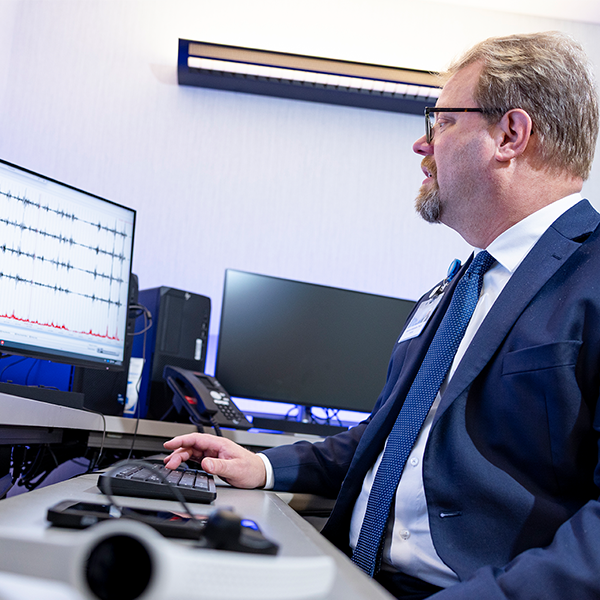-
Bringing regenerative technology of the future to patients today

"The sky's the limit," "possibility" and "potential cure for disease" are aspirational ways Mayo Clinic physicians and scientists described regenerative medicine in a recent virtual presentation at the World Stem Cell Summit 2022. Mayo's panel discussion showcased how it is advancing regenerative medicine through industry collaborations that accelerate scientific discoveries to early stage clinical trials.

Julie Allickson, Ph.D., the Michael S. and Mary Sue Shannon Family Director of Mayo Clinic's Center for Regenerative Medicine, moderated the "National Ecosystem Focused on Regenerative Biotherapeutics and the Importance of Collaborations" breakout session on June 9. Dr. Allickson also is the Otto Bremer Trust Director, Biomanufacturing and Product Development, Center for Regenerative Medicine.
"The first 10 years of regenerative medicine at Mayo Clinic was focused on education and building the infrastructure. We are now pivoting to lead development of cures in an innovative ecosystem," says Dr. Allickson. "Our goal is to develop, manufacture and deliver novel products for unmet clinical needs of the patient."
Dr. Allickson moderated the discussion on how the convergence of research, education and biomanufacturing positions Mayo to be a world-class destination for regenerative biotherapeutics.
Bioprinting organs
Mayo Clinic in Arizona is developing regenerative technologies as new high-tech options for healing. David Lott, M.D., associate director of the Center for Regenerative Medicine in Arizona, describes a future practice transformed by tissue engineering, 3D printing, 3D bioprinting and electrospinning. Dr. Lott is a Mayo Clinic otolaryngologist and head and neck surgeon.
Tissue engineering holds promise of regenerating lost or damaged cells, tissues, and organs. 3D printing and bioprinting incorporate living cells into scaffolds with the possibility of regrowing living tissue, bone, blood vessels and organs. While that may sound like science fiction, it is now becoming reality.
As an example, Dr. Lott spoke of how his team is 3D printing an exact replica of a diseased portion of larynx lost to cancer, and that replica is then implanted in the patient. This procedure offers patients an option of saving the healthy part of the organ and avoiding a total laryngectomy. The quality of life for these patients after surgery is potentially much better.
"Everybody's larynx or voice box is different. We can take a CT scan and through 3D printing reconstruct a larynx tailored to a specific individual and use that as a reconstructive implant," says Dr. Lott. "The infrastructure capability is there, and the workflows are being figured out to use some of these regenerative technologies in patients now."
In addition, Mayo Clinic in Arizona has invested in an electrospinner machine that can create scaffolds with microscopic pores and fibrous structure that mimic natural tissue.
Re-creating disease in a dish
An example of Mayo's innovative research with stem cells lies in the Neuroregeneration Lab at Mayo Clinic in Florida. Researchers use induced pluripotent cells derived from skin fibroblasts — a type of cell — to recreate 3- to 4-millimeter living masses of living tissue, complete with neurons and vascular cells, that resemble human "minibrains." Induced pluripotent stem are adult stem cells that are redirected to differentiate into any type of cell in the body — in this case, brain cells. These models of minibrains provide a humanlike model to track progression of Alzheimer's disease and test therapies to cure it.
Mayo Clinic continually seeks ways to apply its cellular research to patient care. Abba Zubair, M.D., Ph.D., a Mayo Clinic laboratory medicine and pathology specialist, spoke of the challenges of advancing basic science into clinical-grade cells for human application. Dr. Zubair directed the Human Cell Therapy Lab at Mayo Clinic in Florida where products such as mesenchymal stem cells derived from fat tissue and bone marrow are manufactured under strict quality control standards for research. He explained that understanding therapeutic potency and establishing large-scale biomanufacturing are key factors to moving cell therapies into clinical trials.
"The first step is to really ensure that the technique or the approach of harvesting the tissue is done in a sterile manner so that the product is not contaminated. Once you generate the first setup — cell suspension from the tissue — you ensure the sterility of your method. In our case, we use an automated system because it works well," says Dr. Zubair.
Dr. Zubair is now dean of education at Sheikh Shakhbout Medical City in Abu Dhabi, United Arab Emirates. This joint venture with Mayo Clinic is bringing Mayo's regenerative medicine know-how to the Middle East.
"The discussion already is in the pipeline on what is needed to start up a regenerative medicine program in Abu Dhabi. It was decided to first establish a bone marrow transplant program in the emirate," says Dr. Zubair.
Equipping the next generation of health care professionals
Advancing high-tech regenerative tools from research to clinical care requires a specialized workforce. Because regenerative medicine is so new, few academic institutions have coursework available to teach the next generation of physicians, scientists and allied health staff.
Saranya Wyles, M.D., Ph.D., a Mayo Clinic dermatologist and education program director for Mayo Clinic's Center for Regenerative Medicine, explained how Mayo Clinic identified the knowledge gaps and built a curriculum to address it. Mayo Clinic has not only been a pioneer, but also a leader in regenerative medicine education with specialized courses now available across all five schools within Mayo Clinic College of Medicine and Science.
"We addressed this curriculum deficit by recognizing the shift from fighting disease to restoring health," says Dr. Wyles. "We built this new portal of knowledge that went from preclinical discovery, clinical translation and practice application."
As Mayo Clinic moves into its second decade of work in regenerative medicine research, education and practice, it is seeking industry collaborators. Building on each other's strengths, they may be able to speed exciting, high-tech regenerative biotherapeutics to market for patients with unmet needs.
###







